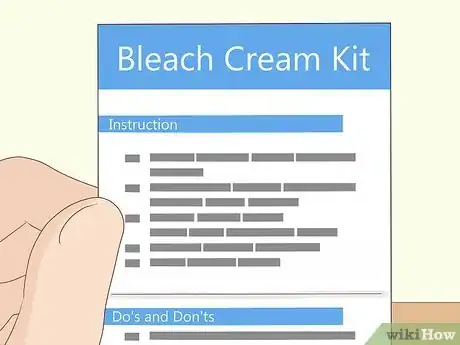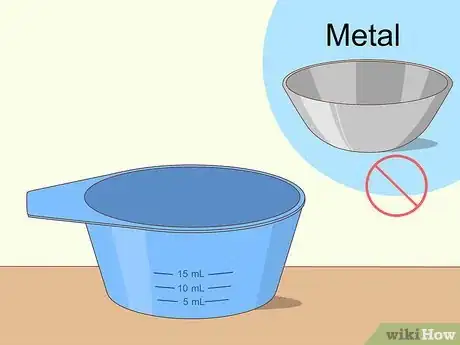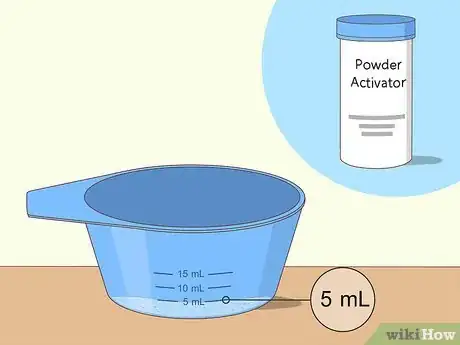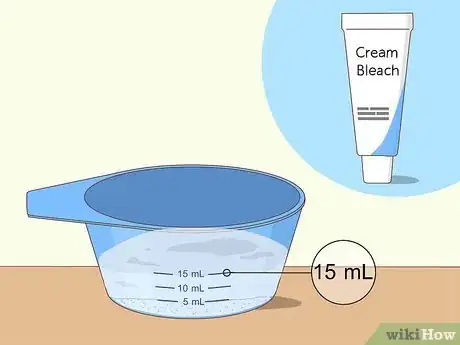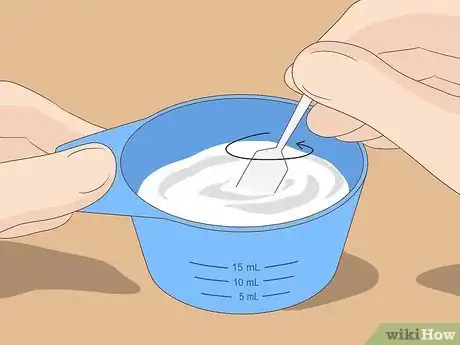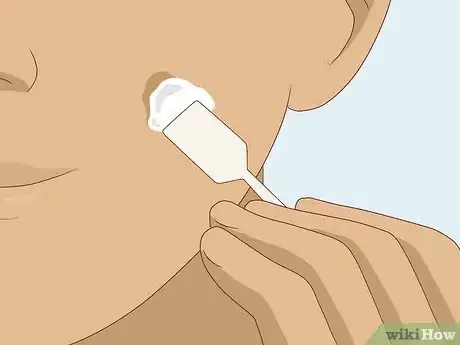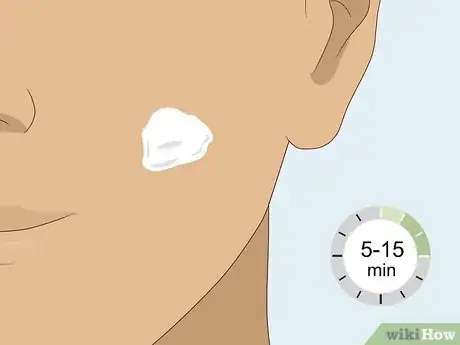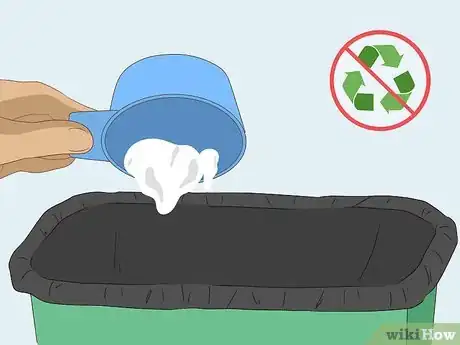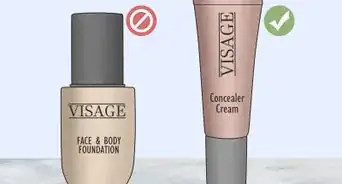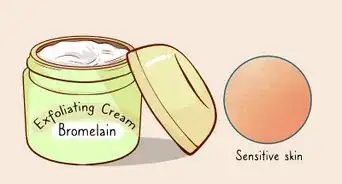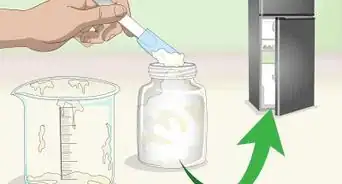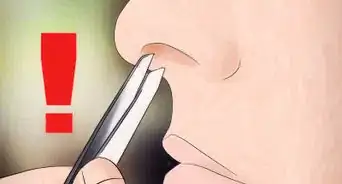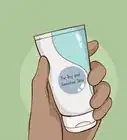This article was co-authored by Margareth Pierre-Louis, MD and by wikiHow staff writer, Hannah Madden. Dr. Margareth Pierre-Louis is a board certified Dermatologist and Dermatopathologist, Physician Entrepreneur, and the Founder of Twin Cities Dermatology Center and Equation Skin Care in Minneapolis, Minnesota. Twin Cities Dermatology Center is a comprehensive dermatology clinic treating patients of all ages through clinical dermatology, cosmetic dermatology, and telemedicine. Equation Skin Care was created to provide the best in evidence-based, natural skin care products. Dr. Pierre-Louis earned a BS in Biology and an MBA from Duke University, an MD from the University of North Carolina at Chapel Hill, completed a residency in dermatology at the University of Minnesota, and completed a dermatopathology fellowship at Washington University in St Louis. Dr. Pierre-Louis is board certified in dermatology, cutaneous surgery, and dermatopathology by the American Boards of Dermatology and Pathology.
There are 11 references cited in this article, which can be found at the bottom of the page.
This article has been viewed 16,788 times.
If you’re trying to lighten your body hair or dark spots on your face, you may have come across a bleach cream kit. These kits usually come with bleach cream, a powder activator, a small bowl, and a plastic spatula. Mixing the bleach and the activator together is a very important step, and it can mean the difference between actually lightening and not getting any results at all. Make sure you follow the directions for your specific kit carefully for a safe and gentle bleaching.
Steps
Combining Ingredients
-
1Read the instructions on your bleach cream carefully. Every bleach cream is slightly different, and yours might need a little bit more or less activator powder. Take a few minutes to go through the instructions to make sure you’re using your bleach cream correctly.[1]
- If you’re trying to lighten dark spots on your skin, make sure you’re using a skin-safe bleaching cream. Topical steroids and products containing azelaic acid are safe for your skin, but many countries require a doctor’s prescription for them.[2]
- Keep in mind that the darker your natural skin tone, avoid using bleaching creams that contain hydroquinone, as it may cause irreversible skin darkening.[3]
-
2Wash your skin with soap and water and pat it dry. Dirt, moisture, and oils on your skin may prevent the bleach from working properly. Use a mild cleanser to wash the skin, rinse it with cold water, and pat your skin dry.[4]
- Generally, you can use bleaching creams on your leg hair, arm hair, and upper lip hair. Never use bleaching cream on your eyebrows or anywhere close to your eyes to avoid irritation.
- If your skin is swollen or broken, don’t use bleach cream on it.[5]
Advertisement -
3Use the enclosed mixing cup or a plastic bowl for mixing. Never use a metal bowl to mix bleach cream—bleach is corrosive and it can stain or damage any metal. Instead, use the mixing cup that the package came with or grab a plastic bowl.[6]
- You can find hair dyeing bowls at most beauty supply stores for around $1.
-
4Pour the powder activator into the measuring cup. Open up the powder activator carefully, and try not to spill any on the ground. Dump the powder into the mixing cup until it reaches the right measurement mark (for most kits, that will be around 5 mL).[7]
- Again, every bleaching treatment is different. If your instructions tell you to pour the activator to a different measurement line, do that!
- If you’re using a plain plastic bowl without measurement lines, you can measure your bleach and activator using a kitchen scale.
-
5Squeeze the cream bleach into the measuring cup. Open the tube of bleaching cream and squeeze it on top of the activator powder. Use a plastic spatula to level out the cream, and keep squeezing until your mixture reaches the right mark (for most kits, that will be around 15 mL).[8]
- While most bleach cream kits ask for a 2:1 ratio, some may require a 1:1 ratio. Read the instructions carefully and follow the directions for your specific kit.
-
6Stir the mixture until it’s smooth and creamy. Use a plastic spatula to gently mix your ingredients together for about 1 minute. When you’re done mixing, the bleach should look smooth and it shouldn’t have any lumps or bumps in it.[9]
- Bleach cream is a little bit thick, so it won’t be runny or watery.
Applying and Rinsing
-
1Use the plastic spatula to spread a layer of bleach onto your skin. Pick out the area that you’d like to lighten, then grab a glob of bleach with the plastic spatula. Spread a thick layer onto the area, making sure everything is covered.[10]
- Make sure the bleach is spread pretty thick! If it’s too thin, it may not work well.
-
2Read the instructions to see how long to leave your cream on. Usually, it will be between 5 and 15 minutes. Set a timer so you don’t lose track of time, and be sure to rinse the bleach cream off right away to prevent irritation.[11]
- Leaving bleach cream on your skin for too long can cause redness, dryness, or a rash.
-
3Throw away any leftover bleach and rinse out the bowl and spatula. Unfortunately, bleach cream can’t be saved once it’s been mixed up. Dump any unused bleach mixture into the trash, and rinse out your tools with warm water.[12]
- Bleach starts to dry out once it hits the air, so it won’t stay good for very long.
- Save the cup and the spatula just in case you’d like to bleach your hair or skin again. Sometimes, it takes more than one treatment to get your desired results.
-
4Rinse the bleach cream off your skin with cool water. When the timer goes off, head to the sink right away. Run cool water over your skin until all the bleaching cream is gone, then pat your skin dry with a towel.[13]
- If your skin feels dry, use a fragrance-free moisturizer to hydrate and soothe it.
- If you do want to bleach your skin or hair again, wait at least 24 hours. Bleaching more than once in a day can cause irritation.
Expert Q&A
Did you know you can get expert answers for this article?
Unlock expert answers by supporting wikiHow
-
QuestionWhat is the best bleaching cream to use?
 Margareth Pierre-Louis, MDDr. Margareth Pierre-Louis is a board certified Dermatologist and Dermatopathologist, Physician Entrepreneur, and the Founder of Twin Cities Dermatology Center and Equation Skin Care in Minneapolis, Minnesota. Twin Cities Dermatology Center is a comprehensive dermatology clinic treating patients of all ages through clinical dermatology, cosmetic dermatology, and telemedicine. Equation Skin Care was created to provide the best in evidence-based, natural skin care products. Dr. Pierre-Louis earned a BS in Biology and an MBA from Duke University, an MD from the University of North Carolina at Chapel Hill, completed a residency in dermatology at the University of Minnesota, and completed a dermatopathology fellowship at Washington University in St Louis. Dr. Pierre-Louis is board certified in dermatology, cutaneous surgery, and dermatopathology by the American Boards of Dermatology and Pathology.
Margareth Pierre-Louis, MDDr. Margareth Pierre-Louis is a board certified Dermatologist and Dermatopathologist, Physician Entrepreneur, and the Founder of Twin Cities Dermatology Center and Equation Skin Care in Minneapolis, Minnesota. Twin Cities Dermatology Center is a comprehensive dermatology clinic treating patients of all ages through clinical dermatology, cosmetic dermatology, and telemedicine. Equation Skin Care was created to provide the best in evidence-based, natural skin care products. Dr. Pierre-Louis earned a BS in Biology and an MBA from Duke University, an MD from the University of North Carolina at Chapel Hill, completed a residency in dermatology at the University of Minnesota, and completed a dermatopathology fellowship at Washington University in St Louis. Dr. Pierre-Louis is board certified in dermatology, cutaneous surgery, and dermatopathology by the American Boards of Dermatology and Pathology.
Board Certified Dermatologist
-
QuestionHow can I make bleaching cream more effective?
 Margareth Pierre-Louis, MDDr. Margareth Pierre-Louis is a board certified Dermatologist and Dermatopathologist, Physician Entrepreneur, and the Founder of Twin Cities Dermatology Center and Equation Skin Care in Minneapolis, Minnesota. Twin Cities Dermatology Center is a comprehensive dermatology clinic treating patients of all ages through clinical dermatology, cosmetic dermatology, and telemedicine. Equation Skin Care was created to provide the best in evidence-based, natural skin care products. Dr. Pierre-Louis earned a BS in Biology and an MBA from Duke University, an MD from the University of North Carolina at Chapel Hill, completed a residency in dermatology at the University of Minnesota, and completed a dermatopathology fellowship at Washington University in St Louis. Dr. Pierre-Louis is board certified in dermatology, cutaneous surgery, and dermatopathology by the American Boards of Dermatology and Pathology.
Margareth Pierre-Louis, MDDr. Margareth Pierre-Louis is a board certified Dermatologist and Dermatopathologist, Physician Entrepreneur, and the Founder of Twin Cities Dermatology Center and Equation Skin Care in Minneapolis, Minnesota. Twin Cities Dermatology Center is a comprehensive dermatology clinic treating patients of all ages through clinical dermatology, cosmetic dermatology, and telemedicine. Equation Skin Care was created to provide the best in evidence-based, natural skin care products. Dr. Pierre-Louis earned a BS in Biology and an MBA from Duke University, an MD from the University of North Carolina at Chapel Hill, completed a residency in dermatology at the University of Minnesota, and completed a dermatopathology fellowship at Washington University in St Louis. Dr. Pierre-Louis is board certified in dermatology, cutaneous surgery, and dermatopathology by the American Boards of Dermatology and Pathology.
Board Certified Dermatologist
Warnings
- Never buy a skin or hair lightening product made in another country. These have been found to contain dangerous chemicals, like mercury.[14]⧼thumbs_response⧽
References
- ↑ https://www.aad.org/public/everyday-care/skin-care-secrets/routine/fade-dark-spots
- ↑ https://dermnetnz.org/topics/bleaching-agents/
- ↑ Margareth Pierre-Louis, MD. Board Certified Dermatologist. Expert Interview. 15 May 2020.
- ↑ https://www.youtube.com/watch?t=197&v=aFFBjjCOUWY&feature=youtu.be
- ↑ https://www.babycentre.co.uk/x1041960/is-it-safe-to-use-bleaching-products-for-body-hair-during-pregnancy
- ↑ https://www.youtube.com/watch?t=175&v=aFFBjjCOUWY&feature=youtu.be
- ↑ https://www.youtube.com/watch?t=141&v=REPHjtfnUmA&feature=youtu.be
- ↑ https://www.youtube.com/watch?t=145&v=REPHjtfnUmA&feature=youtu.be
- ↑ https://www.youtube.com/watch?t=201&v=nx3Sk5N3vKg&feature=youtu.be
- ↑ https://www.youtube.com/watch?t=233&v=nx3Sk5N3vKg&feature=youtu.be
- ↑ https://nair.com.au/product/nair-cream-bleach-for-face-and-body/
- ↑ https://nair.com.au/product/nair-cream-bleach-for-face-and-body/
- ↑ https://www.babycentre.co.uk/x1041960/is-it-safe-to-use-bleaching-products-for-body-hair-during-pregnancy
- ↑ https://www.aad.org/public/everyday-care/skin-care-secrets/routine/fade-dark-spots
